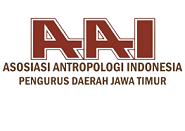Survival and risk perceptions of healthcare professionals and patients
Downloads
In order to make an informed, evidence-based decision, it is vital to recognize numbers, statistics and concepts that are apparently transparent but are not always adequately accounted for. Health professionals, patients, and others frequently misinterpret numbers, statistics and concepts in healthcare. Among the many repercussions of health literacy, appropriate decision-making and the reduction in the number of interventions and treatments stand out, resulting in an improvement in people's health and a decrease in overtreatment and health expenses. This study intends to evaluate how properly health professionals and the public, in general, comprehend and interpret some health-related numbers. To accomplish this goal, the researchers shared a questionnaire made available online in Portugal from January 2, 2019, until April 12, 2019. The final sample comprised 485 respondents; 154 physicians, 142 nurses, and 189 people from other professions. The findings suggest that there is a problem with widespread numerical illiteracy, which should not be the case, highlighting the need to improve the numerical and statistical health literacy of both health professionals and the general population. So, medical professionals and patients must thus comprehend the statistics and health-related concepts to obtain the proper consent.
Aggarwal, R. (2018). Statistical literacy for healthcare professionals: Why is it important? Annals of Cardiac Anaesthesia, 21(4), 349–350. https://doi.org/10.4103/aca.ACA_177_18
Ferreira, C., Abreu, T., & Basto, M. (2020). A misunderstood measure in screening: the positive predictive value. Journal of Communication in Healthcare, 13(3), 245–252. https://doi.org/https://dx.doi.org/10.1080/17538068.2020.1801316
Ferreira, C., Abreu, T., & Basto, M. (2022). Perception of transmitted risk in healthcare. Journal of Public Health: From Theory to Practice, 30, 1245–1249. Retrieved from https://link.springer.com/article/10.1007/s10389-020-01402-z
Folkman, J., & Kalluri, R. (2004). Cancer without disease. Nature, 427, 787. Retrieved from https://www.nature.com/articles/427787a
Gigerenzer, G., Gaissmaier, W., Kurz-Milcke, E., Schwartz, L. M., & Woloshin, S. (2007). Helping Doctors and Patients Make Sense of Health Statistics. Psychological Science in the Public Interest, 8(2), 53–96. https://doi.org/10.1111/j.1539-6053.2008.00033.x
Gigerenzer, G., Krauss, S., & Vitouch, O. (2004). The Null Ritual: What You Always Wanted to Know About Significance Testing but Were Afraid to Ask. In D. Kaplan (Ed.), The SAGE Handbook of Quantitative Methodology for the Social Sciences (pp. 392–409). 2455 Teller Road, Thousand Oaks California 91320 United States of America: SAGE Publications, Inc. https://doi.org/10.4135/9781412986311.n21
Lipkus, I. M., Samsa, G., & Rimer, B. K. (2001). General Performance on a Numeracy Scale among Highly Educated Samples. Medical Decision Making, 21(1), 37–44. https://doi.org/10.1177/0272989X0102100105
Malhotra, A. (2018). Big Food and Big Pharma - Killing for Profit? at the European Parliament. Retrieved February 1, 2022, from https://www.youtube.com/watch?v=jcnd3usdNxo
Mooi, W., & Peeper, D. (2006). Oncogene-induced cell senescence – Halting on the road to cancer. New England Journal of Medicine, 355, 1037–1046. Retrieved from https://www.nejm.org/doi/full/10.1056/NEJMra062285
Reyna, V., & Brainerd, C. (2007). The importance of mathematics in health and human judgment: Numeracy, risk communication, and medical decision making. Learning and Individual Differences, 17, 147–159. Retrieved from https://www.sciencedirect.com/science/article/abs/pii/S1041608007000416
Sarfati, D., Howden-Chapman, P., Woodward, A., & Salmond, C. (1998). Does the frame affect the picture? A study into how attitudes to screening for cancer are affected by the way benefits are expressed. Journal of Medical Screening, 5, 137–140. Retrieved from https://journals.sagepub.com/doi/10.1136/jms.5.3.137
Schwartz, L., Woloshin, S., Black, W., & Welch, H. (1997). The Role of Numeracy in Understanding the Benefit of Screening Mammography. Annals of Internal Medicine, 127, 966–972. https://doi.org/10.7326/0003-4819-127-11-199712010-00003
Schwartz, L., Woloshin, S., & Welch, H. (2005). Can patients interpret health information? An assessment of the medical data interpretation test. Medical Decision Making, 25, 290–300. https://doi.org/https://doi.org/10.1177/0272989X05276860
Sedrakyan, A., & Shih, C. (2007). Improving depiction of benefits and harms: Analyses of studies of well-known therapeutics and review of high-impact medical journals. Medical Care, 45(10), S23–S28. https://doi.org/https://dx.doi.org/10.1097/MLR.0b013e3180642f69
Serrano, M. (2007). Cancer regression by senescence. New England Journal of Medicine, 356, 1996–1997. Retrieved from https://www.nejm.org/doi/full/10.1056/NEJMcibr071461
Tableau. (2019). Tableau Desktop [Computer software]. Retrieved from https://www.tableau.com/products/desktop
Wegwarth, O., Gaissmaier, W., & Gigerenzer, G. (2011). Deceiving numbers: survival rates and their impact on doctors' risk communication. Medical Decision Making, 31(3), 386–394. https://doi.org/https://doi.org/10.1177/0272989X10391469
Wegwarth, O., Schwartz, L., Woloshin, S., Gaissmaier, W., & Gigerenzer, G. (2012). Do physicians understand cancer screening statistics? A national survey of primary care physicians in the United States. Annals of Internal Medicine, 156(5), 340–349. https://doi.org/https://dx.doi.org/10.7326/0003-4819-156-5-201203060-00005
Copyright (c) 2023 Indonesian Journal of Social Sciences

This work is licensed under a Creative Commons Attribution-NonCommercial-ShareAlike 4.0 International License.
1. The authors agree to transfer the transfer copyright of the article to the Indonesian Journal of Social Sciences effective if and when the paper is accepted for publication. The authors can download the Copyright Transfer Agreement here.
2. The legal formal aspect of journal publication accessibility refers to Creative Commons Attribution-NonCommercial-ShareAlike 4.0 International License (CC BY-NC-SA).
3. Every publication (printed/electronic) is open access for educational purposes, research, and library. Other than the aims mentioned above, the editorial board is not responsible for copyright violation.

IJSS by Unair is licensed under a Creative Commons Attribution-NonCommercial-ShareAlike 4.0 International License.




















